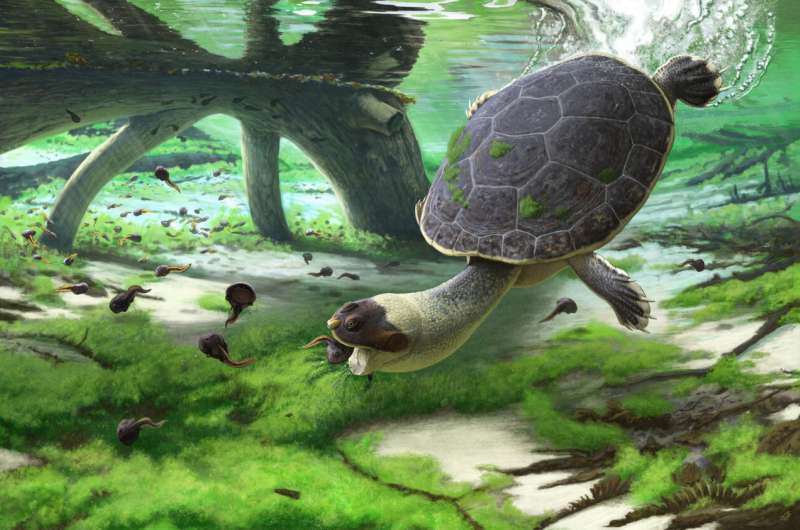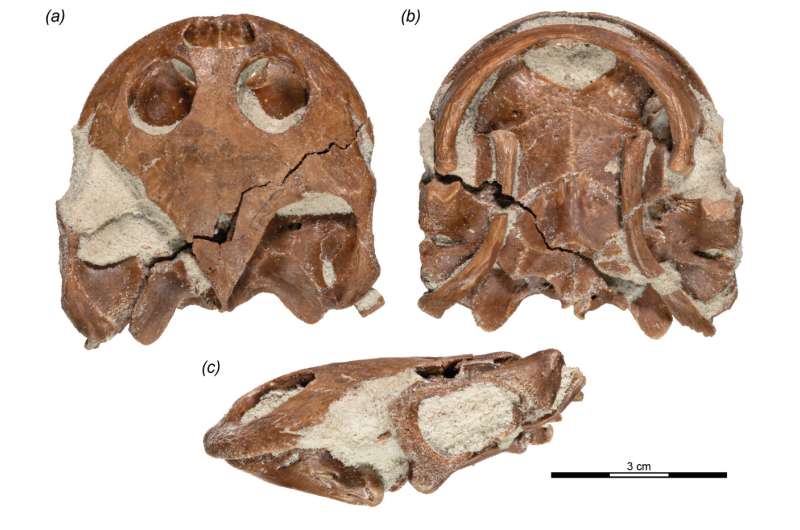May 5, 2021 report
New species of pelomedusoid turtle found in Madagascar

A team of researchers from Universität Freiburg, the Denver Museum of Nature & Science, Université d'Antananarivo and Stony Brook University has discovered a new species of pelomedusoid turtle in Madagascar. In their paper published in the journal Royal Society Open Science, the group describes the features of the turtle and why they believe it represents the convergent evolution of specialized suction feeders among pleurodire.
The ancient turtle was found in a geological formation in a part of Madagascar generally rich in fossilized birds, mammals, crocodiles and even dinosaurs. Study of the turtle, which the team has named Sahonachelys mailakavava, showed it to be from the Late Cretaceous and that it was a pelomedusoid (a freshwater turtle) and that it was less than a half-meter long. They note that the turtle find is particularly important because it has both a shell and a skull—most others from its era have one or the other. Having a complete skeleton, they note, makes it easier to place the turtle on the family tree. They have found it to be a predecessor of podocnemidid turtles—in modern times, they live in South America and Madagascar. They also suggest that the find confirms that fauna in Madagascar was already unique by the Late Cretaceous.
The researchers describe the turtle as flat-headed with a big tongue and a gracile lower jaw, which likely gave its head a frog-like appearance. They believe it was most likely a suction feeder. Most aquatic predators, they note, nab their prey by darting and grabbing—suction feeders, in contrast, hold their head steady and use the suction that develops when they open their mouths to pull their victim into their bodies. Like most, turtles, S. mailakavava was toothless, which suggests it used suction to pull its prey all the way down its throat. They note the rest of the structure of its head was very well suited to creating suction, including a mouth that formed a circle.

The researchers suggest the ancient turtle likely fed on small prey such as fish fry, insect larvae or tadpoles. Its name comes from a mix of Malagasy and Greek and means "quick-mouthed frog turtle."
More information: Walter G. Joyce et al. A new pelomedusoid turtle, Sahonachelys mailakavava , from the Late Cretaceous of Madagascar provides evidence for convergent evolution of specialized suction feeding among pleurodires, Royal Society Open Science (2021). DOI: 10.1098/rsos.210098
Journal information: Royal Society Open Science
© 2021 Science X Network


















